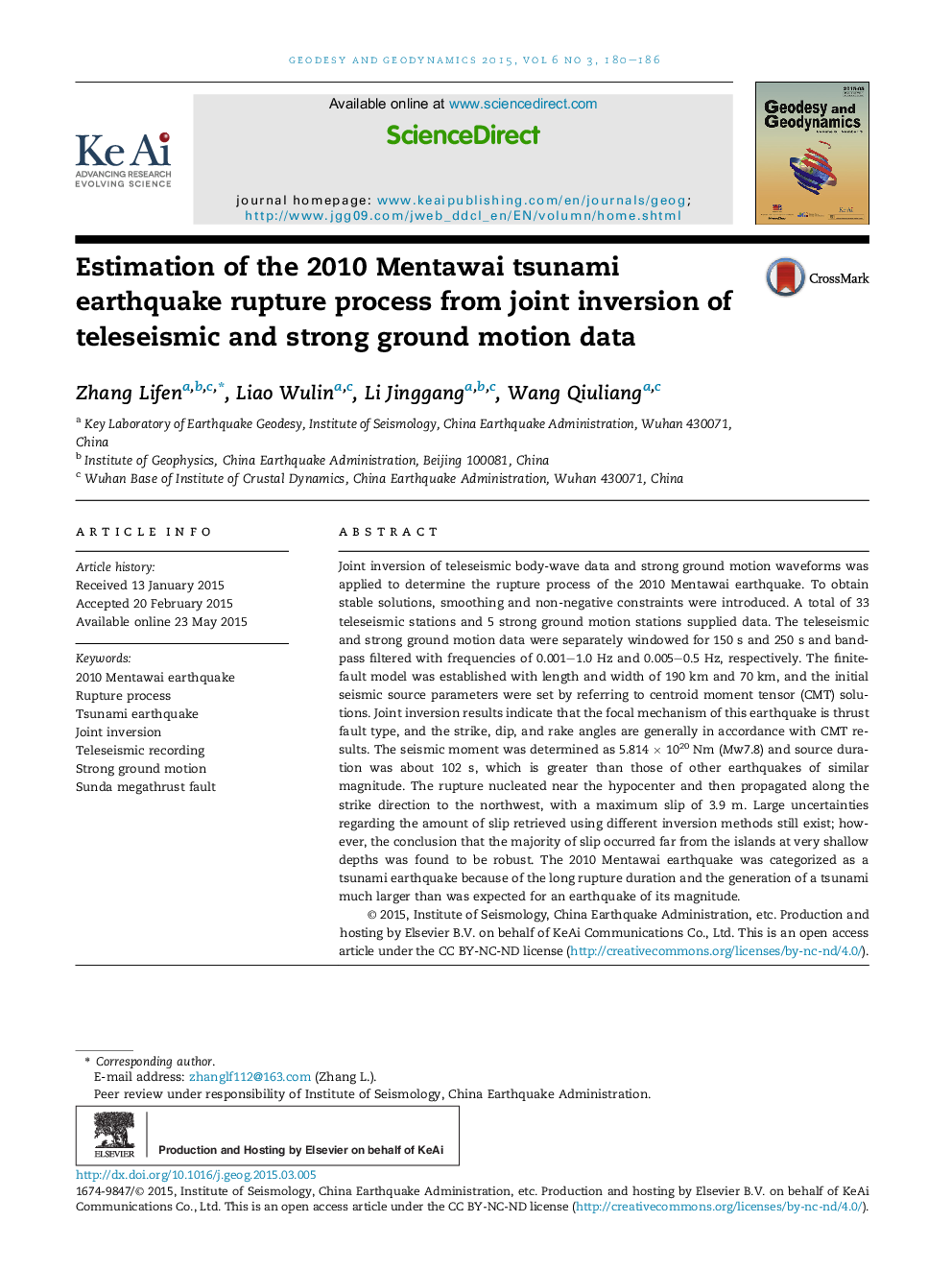| Article ID | Journal | Published Year | Pages | File Type |
|---|---|---|---|---|
| 4683644 | Geodesy and Geodynamics | 2015 | 7 Pages |
Joint inversion of teleseismic body-wave data and strong ground motion waveforms was applied to determine the rupture process of the 2010 Mentawai earthquake. To obtain stable solutions, smoothing and non-negative constraints were introduced. A total of 33 teleseismic stations and 5 strong ground motion stations supplied data. The teleseismic and strong ground motion data were separately windowed for 150 s and 250 s and band-pass filtered with frequencies of 0.001–1.0 Hz and 0.005–0.5 Hz, respectively. The finite-fault model was established with length and width of 190 km and 70 km, and the initial seismic source parameters were set by referring to centroid moment tensor (CMT) solutions. Joint inversion results indicate that the focal mechanism of this earthquake is thrust fault type, and the strike, dip, and rake angles are generally in accordance with CMT results. The seismic moment was determined as 5.814 × 1020 Nm (Mw7.8) and source duration was about 102 s, which is greater than those of other earthquakes of similar magnitude. The rupture nucleated near the hypocenter and then propagated along the strike direction to the northwest, with a maximum slip of 3.9 m. Large uncertainties regarding the amount of slip retrieved using different inversion methods still exist; however, the conclusion that the majority of slip occurred far from the islands at very shallow depths was found to be robust. The 2010 Mentawai earthquake was categorized as a tsunami earthquake because of the long rupture duration and the generation of a tsunami much larger than was expected for an earthquake of its magnitude.
